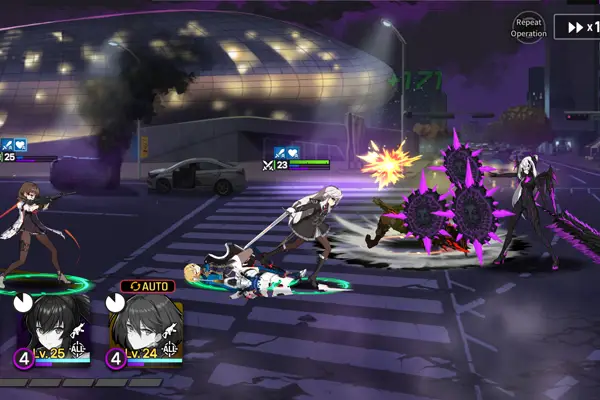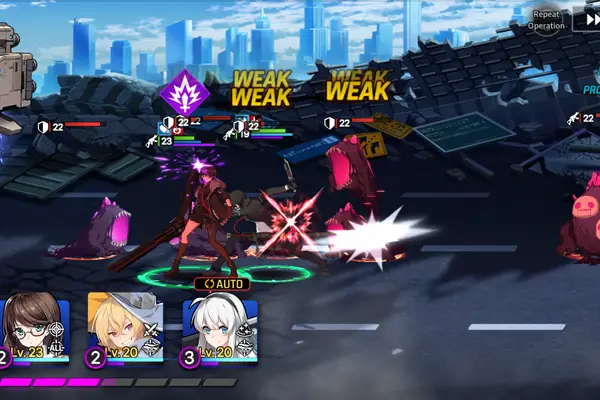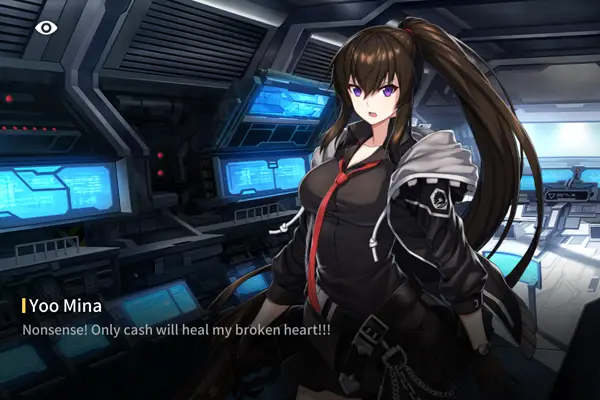I’d Watch That Anime
Counterside is one of the more memorable games I’ve recently had the opportunity to play. While gacha games would be a dime a dozen if they weren’t usually free, Counterside manages to stand out from the crowd. While Studiobeside’s anime-inspired Korean RPG might not be everyone’s cup of tea, it brings plenty of great ideas.
Following an event called the Grand Dimension Failure, a series of events called Corruption Disasters rocked the world. This allows energy to leak into our world from a dimension called the Counterside, creating hostile entities known as corrupted objects. However, these corrupted objects also contain a precious resource called Eternium. This led to the establishment of private Taskforce Companies, which collect Eternium and battle Corrupted Objects with superpowered individuals called Counters.
Players take the role of the mysterious new owner of a struggling Taskforce called Coffin Company. However, the story’s protagonist is the newly hired Counter Yoo Mina. She joins squad leader Hilde and slacker swordsman Joo Shiyoon as the new member of Fenrir Squad, Coffins’ premiere team. Aided by the rest of the Coffin Company, they battle Corrupted Objects, explore the Counterside and unravel multiple layers of competing conspiracies.

Swords, Guns and Side-Scrolling
In terms of gameplay, Counterside is a tactical side-scrolling RPG. Players assemble a squad of up to eight units and deploy them on the battlefield. Once deployed, they’ll automatically fight their way across the screen as enemies attempt to do the same. Deployment costs various amounts of Deployment Points depending on the character’s Type, Role and star level. Deployment Points refill over time, but slowly enough that you still need to be careful. Additionally, while players can have all eight units deployed simultaneously, the selection bar only holds four at a time. The game adds units to the bar as space becomes available, and players can decide what order they appear in the queue.
Counterside divides units into seven Roles and three Types. The primary roles are Striker, Ranger, Defender and Sniper, and follow a rock-paper-scissors system of strengths and weaknesses. Specialized classes include stationary Towers, Supporters who heal and buff allies and Siege units that ignore regular enemies to target bosses. It’s also worth noting that while Defenders use melee combat and Snipers use ranged, other classes may vary from unit to unit. As a result, players need to consider them when deploying units onto the battlefield.
As for the three Types, Counters are the main event, with unique names, effects and abilities. Soldiers are essentially the bulk alternative, being cheaper to deploy but lacking special features. They also typically deploy in groups, allowing players to overwhelm the opponents with numbers. Finally, Mechs are expensive and slow but durable and immune to knockbacks.
Counterside players must consider all the above to secure victory in the game’s fast-paced battles. This makes combat surprisingly tense and engaging without being so complex that it’s unapproachable. In fact, I’m impressed enough with Counterside’s action to recommend the game on that strength alone.

Presentation is Key
I wasn’t as impressed with some of the Counters, however. Characters belong to different factions that share a similar visual style. And while most of these are great, I feel like some of them clashed with the rest of the game’s graphic design. However, the ones that fit do it to a T, and the rest are too subjective to make a big deal over.

I’d Still Watch That Anime
Counterside’s writing is more of a mixed bag. Mina, Fenrir Squad, and Coffin’s secondary team Alt Squad have engaging stories that tie into the game’s central conflict. Even Mina’s tsundere shtick comes across as endearing instead of played out. However, the game spends way too much time on running gags and banter that doesn’t contribute to the story. A lot of this “comic relief” isn’t even funny, just catty bickering and anime cliches. There’s also too much dialogue overall, and the frequent cutscenes tend to drag on longer than necessary.
And these criticisms are from someone who enjoys this kind of anime nonsense. I can’t imagine someone who doesn’t like it putting up with it for long. This is a shame since Counterside’s world and story are very intriguing when the dialogue isn’t getting in the way. The combat also feels great and is fantastic if you’re into this style of gameplay. Counterside probably isn’t for everyone, but it might be worth a spot in your Google Play library.
